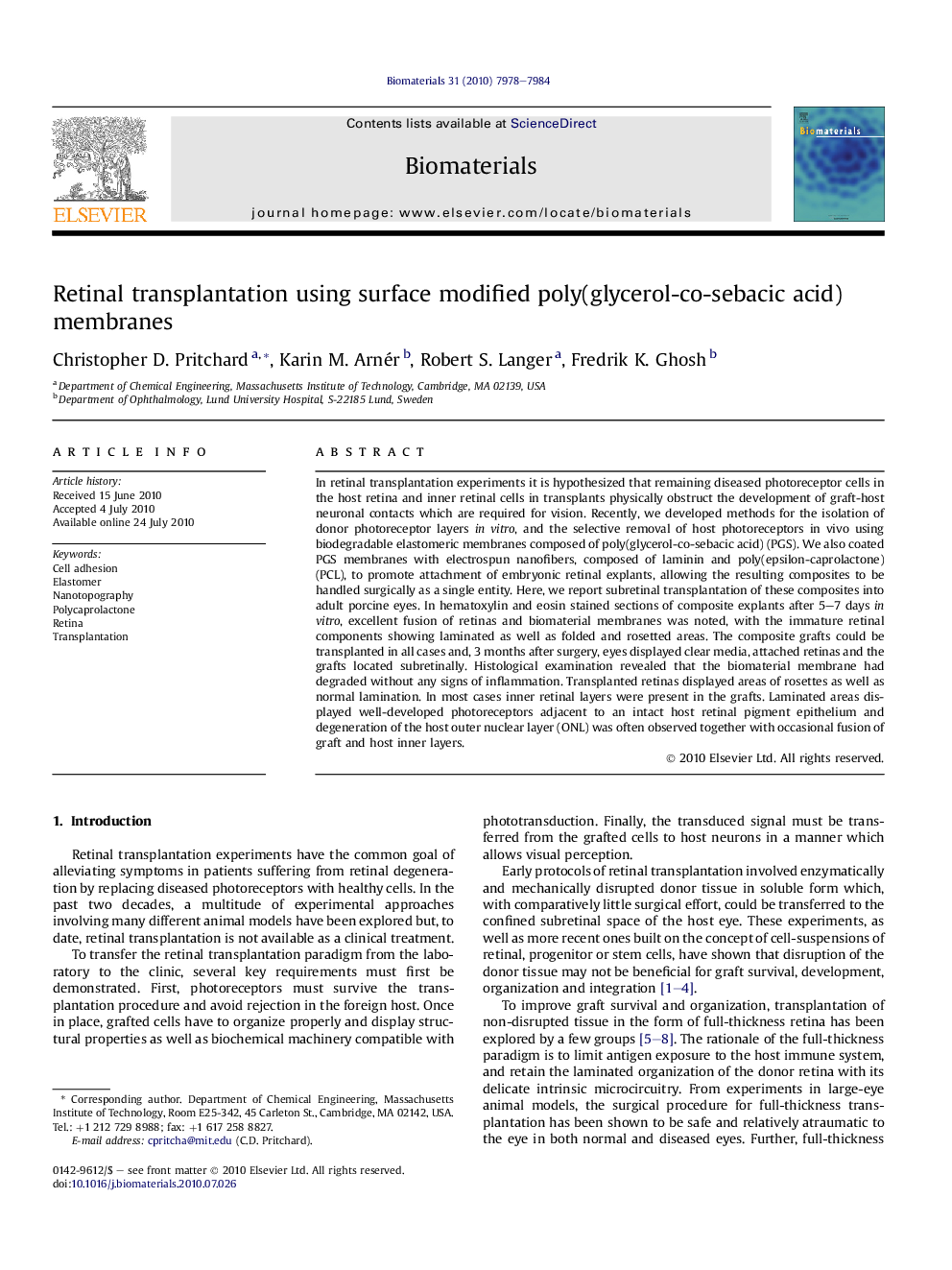| Article ID | Journal | Published Year | Pages | File Type |
|---|---|---|---|---|
| 8053 | Biomaterials | 2010 | 7 Pages |
In retinal transplantation experiments it is hypothesized that remaining diseased photoreceptor cells in the host retina and inner retinal cells in transplants physically obstruct the development of graft-host neuronal contacts which are required for vision. Recently, we developed methods for the isolation of donor photoreceptor layers in vitro, and the selective removal of host photoreceptors in vivo using biodegradable elastomeric membranes composed of poly(glycerol-co-sebacic acid) (PGS). We also coated PGS membranes with electrospun nanofibers, composed of laminin and poly(epsilon-caprolactone) (PCL), to promote attachment of embryonic retinal explants, allowing the resulting composites to be handled surgically as a single entity. Here, we report subretinal transplantation of these composites into adult porcine eyes. In hematoxylin and eosin stained sections of composite explants after 5–7 days in vitro, excellent fusion of retinas and biomaterial membranes was noted, with the immature retinal components showing laminated as well as folded and rosetted areas. The composite grafts could be transplanted in all cases and, 3 months after surgery, eyes displayed clear media, attached retinas and the grafts located subretinally. Histological examination revealed that the biomaterial membrane had degraded without any signs of inflammation. Transplanted retinas displayed areas of rosettes as well as normal lamination. In most cases inner retinal layers were present in the grafts. Laminated areas displayed well-developed photoreceptors adjacent to an intact host retinal pigment epithelium and degeneration of the host outer nuclear layer (ONL) was often observed together with occasional fusion of graft and host inner layers.
